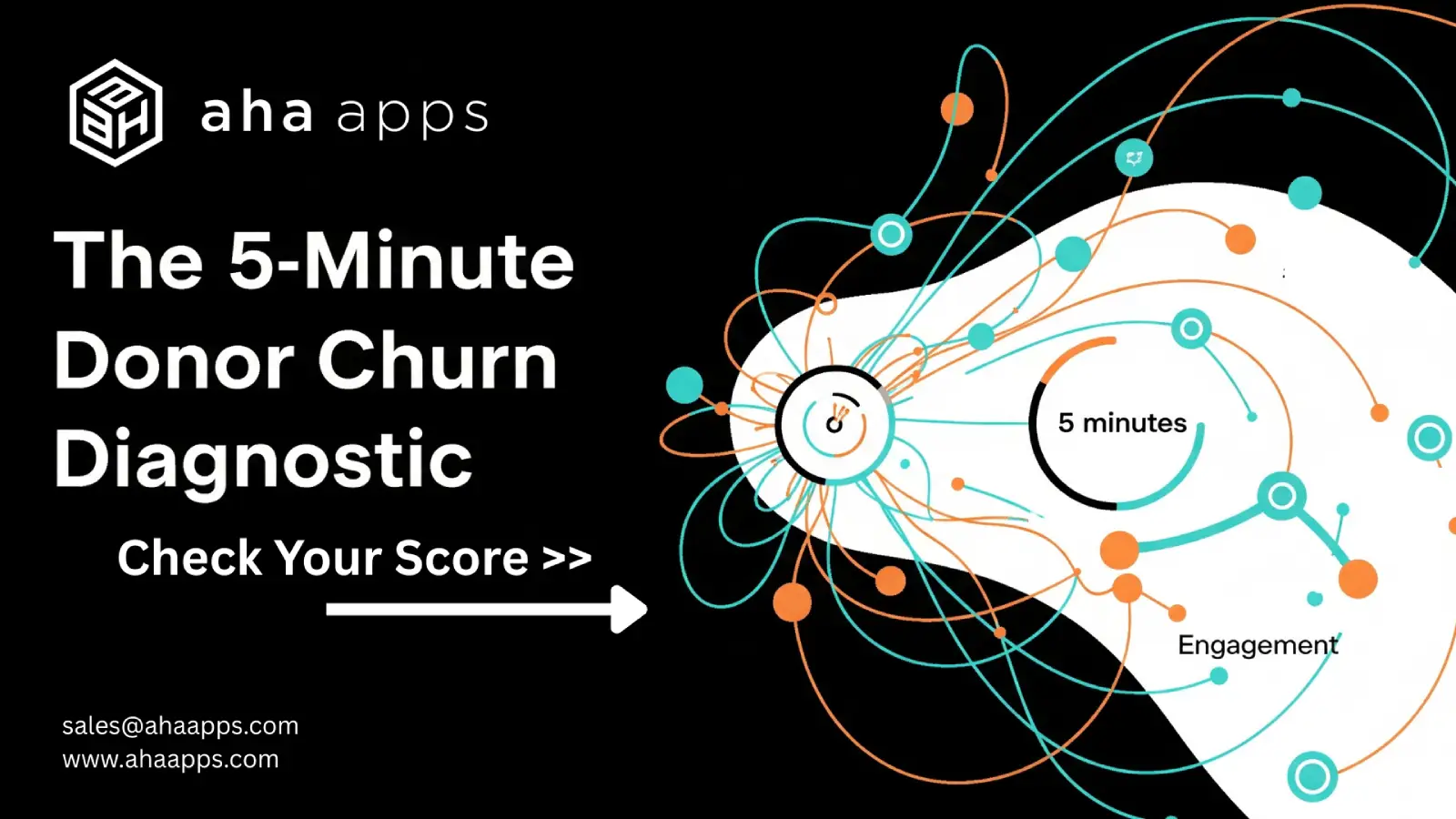May 12th, 2025
By Satish Reddy | Reading time 4 mins
Securing Technology Funding for CRM Nonprofit Success: A Guide to Addressing Common Nonprofit Issues
In today’s digital world, nonprofit organizations face growing demands to deliver efficient services, engage donors, and track impact all while operating with limited resources. For many, the solution lies in adopting the right technology tools, especially CRM nonprofit systems that can streamline operations and deepen mission alignment.
However, securing funding for these technologies remains a challenge. The Technology Association of Grantmakers’ 2024 State of Philanthropy Tech Survey highlights a critical truth: without stronger investments in nonprofit technology, many missions are at risk.

Take The 5-Minute Donor Churn Diagnostic

The Technology Gap: An Ongoing Issue for Nonprofits
While 67% of Grantmaker’s are now streamlining grant applications and 56% are simplifying reporting, support for direct technology needs is declining. The survey reveals:
- Only 20% of Grantmaker’s provide technology or tools for nonprofits down from 23% in 2022.
- Just 30% offer unrestricted funding compared to 34% two years prior.
These declining numbers come at a time when nonprofits need more nor less support. In an era of increasing cybersecurity threats and the rise of AI, a lack of tech investment is one of the most pressing issues with nonprofits trying to scale their impact.
Digitally mature nonprofits are four times more likely to achieve their mission goals than their peers, making the case for stronger investment in tools like nonprofit CRM systems more urgent than ever.
Nonprofit Help Must Include Technology Funding
The need for nonprofit help around technology is especially critical for small, community-based organizations. According to NTEN’s Digital Investment Report:
- 45% of nonprofits say they aren’t spending enough on tech.
- 77% cite lack of budget as the primary barrier.
- 47% cite lack of funder support.
- 38% cite lack of donor support.
Most nonprofits (92%) operate on annual budgets under $1 million. Many serve local communities with small teams that juggle multiple roles. Without proper technology infrastructure, even routine operations become burdensome.
The most commonly reported benefits of technology investment include:
- Enhanced program and service delivery (96%)
- Organizational growth and capacity building (89%)
- Fundraising and financial sustainability (82%)
These outcomes are even more effective when organizations implement CRM nonprofit systems that centralize data, automate processes, and improve engagement.
Technology Funding Leads to Equitable Outcomes
Investments in CRM systems and digital tools can drive better, fairer outcomes in under-resourced communities. With proper funding and implementation, nonprofits can overcome operational bottlenecks and serve more people with greater efficiency.
Importantly, funders who support technology improvements help nonprofits fulfil not just their missions but also align with shared values around equity, impact, and community growth.
Real-World Support for Tech-Driven Nonprofits
Some funders are already recognizing the importance of supporting nonprofits through technology:
- Capacity-building grants focused on leadership and digital sustainability help nonprofits strengthen internal systems.
- Accelerator programs provide nonprofit help in the form of unrestricted funding and mentorship, especially to organizations developing tech-based solutions for social challenges.
These efforts showcase how targeted technology funding, especially in CRM nonprofit tools, can play a vital role in improving both organizational stability and mission-driven outcomes.
Tips for Nonprofits Seeking Technology and CRM Funding
To overcome the technology funding gap, nonprofits need to make a compelling, strategic case for support. Here are three tips to strengthen funding applications:
- Articulate the Mission Impact
Link the technology investment such as a CRM system to your organization’s mission. Explain how it will improve efficiency, deepen community engagement, or scale services.
- Demonstrate Clear Need
Use data and real-world examples to highlight current limitations. Align your request with your strategic plan and explain how technology addresses these issues with nonprofits.
- Tailor the Proposal to the Funder
Understand the funder’s goals and show how your CRM or tech investment aligns with their priorities. Emphasize long-term impact and operational sustainability.
Closing Thoughts
For many organizations, especially those with grassroots missions, the lack of adequate technology support remains a core challenge. But by communicating the strategic value of CRM tools and technology investment, nonprofits can make stronger cases for funding.
In the end, solving issues with nonprofits isn’t just about programs it’s about building systems that work. With the right funding and focus, CRM nonprofit systems and other tech investments can help these organizations thrive, scale, and serve with greater impact.
Ready to streamline your nonprofit’s operations and maximize your impact? Contact Aha Apps today to learn more about how Microsoft Dynamics CRM can transform the way you work!
How Dynamics CRM Services Helps a Startup Nonprofit
In today’s digital age, nonprofit organizations are increasingly turning to technology to enhance their operations, streamline their processes, and maximize their impact. For startup nonprofits, the right Customer Relationship Management (CRM) system can be a game-changer.